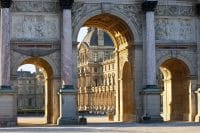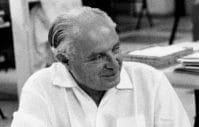
Rococo Style: How it Distincts in Architecture, Furnishings and Painting
Rococo Style: Birth and Development The Rococo, as a reflection of the trends, tastes and way of life of France…
early nineteenth century
34,5 x 25 cm; 50 x 40 cm (with frame)
'Ruins of the Temple Kardeseh, Nubia', framed watercolor lithograph, Louis Haghe (1806-1855) after drawing by David Roberts RA, ca. 1842.
The artist was a Belgian lithographer and watercolourist. Trained in watercolor painting in his adolescence, he found work in the relatively new art of lithography when the first printing press was set up in Tournai. He visited England to find work and settled there permanently in 1823.
Together with William Day (1797–1845), he founded the Day & Haghe company around 1830, which became the most famous lithographic printing company of the early Victorian period in London.
In 1838, Day and Haghe were appointed “Lithographers to the Queen”. The most ambitious project was to provide 250 images for David Roberts's The Holy Land, Syria, Idumea, Arabia, Egypt, and Nubia printed between 1842 and 1849. From the mid-1850s Haghe concentrated more on his watercolors and he gained a reputation for his Northern European architectural scenes, with his paintings purchased and exhibited by the Victoria and Albert Museum. He also painted in oils and his works were exhibited at the British Institution.
He became president of the New Society of Painters in Water Colors from 1873 to 1884.

Rococo Style: Birth and Development The Rococo, as a reflection of the trends, tastes and way of life of France…

The Empire style, with its magnificent fusion of majesty and grace, remains an icon of classic furnishings, exerting a timeless charm…

Giò Ponti is one of the artists who most dominated the Italian post-war period, acting as a spokesperson for important innovations in the world…
have viewed this article in the last 30 minutes.